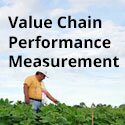How Weather Changes Affect Pest Activity Around Your Home
Changes in barometric pressure, temperature, and humidity can influence pest behavior and movement patterns. Before or during weather fronts, ants, cockroaches, and other moisture-seeking pests are more likely to move indoors to avoid saturated soil or abrupt environmental shifts. Flying insects often travel closer to the ground under lower pressure and higher humidity, increasing contact around siding and soffits. These dynamics can increase exposure to allergens (e.g., cockroach and dust mite allergens) and potential contaminants associated with some pests.
Preventive measures include sealing building envelope gaps, maintaining screens and soffit vents with appropriate mesh rather than blocking ventilation, and managing moisture through proper drainage and dehumidification. Monitoring local weather patterns can help time inspections and interventions, such as exterior perimeter treatments and addressing entry points before storms or heat waves. Integrated pest management programs that combine monitoring, exclusion, sanitation, and targeted treatments are more effective than reactive measures alone. Reported effectiveness varies by pest species, building condition, and implementation quality; substantial reductions are achievable with consistent, proactive control, but specific percentages depend on context and should be validated by service data or studies for the target pests and region.
Understanding Barometric-Pressure Shifts
Barometric pressure changes influence insect behavior in ways that can affect indoor pest activity. When pressure drops ahead of weather systems, many insects become more active or shift habitats. Ground-dwelling pests such as ants and cockroaches may leave saturated or disturbed areas to seek food and shelter indoors.
Some flying insects reduce flight altitude under lower pressure, which can increase contact with buildings and entry points. Pressure changes combined with temperature shifts can further modify activity levels, for example by accelerating foraging or movement. There's evidence that certain species adjust reproductive timing in response to low pressure, which can contribute to short-term population increases.
Monitoring local barometric trends can support preventive measures. Practical steps include sealing entry points, managing moisture (fixing leaks, improving ventilation), storing food in sealed containers, and maintaining routine sanitation.
These actions reduce the likelihood of infestations when weather conditions favor pest movement.
Key Benefits: Allergy Reduction
Shifts in atmospheric pressure and weather can influence pest behavior and indoor allergen levels. Increased humidity and rainfall promote mold growth and dust mite proliferation, both of which are common triggers for allergic symptoms.
Warmer temperatures and post-storm clearing can increase pollen levels and the activity of pests that can carry or spread allergens.
Mitigation measures include controlling indoor moisture, repairing leaks, using adequate ventilation, and cleaning regularly to reduce dust and biological debris.
Monitoring and managing cockroaches and rodents is important, as their droppings, saliva, and dander are established asthma and allergy triggers. Coordinating pest management with seasonal weather patterns can help reduce allergen sources.
Professional pest control services can apply targeted treatments and recommend environmental controls to limit pests, mold, and pollen intrusion.
Seal Attic Soffit Vents
Soffit vents are necessary for attic ventilation, but they should be screened and sealed to limit pest entry and moisture problems. Installing corrosion-resistant metal mesh with an appropriate opening size (generally 1/8 inch for insect exclusion or 1/4 inch for larger pests where code allows) helps deter rodents and insects while maintaining airflow.
Proper sealing around vent housings and duct/roof interfaces reduces uncontrolled air leakage, moderates attic temperature fluctuations, and limits condensation that can lead to mold growth and wood decay. Controlling moisture also protects insulation performance and reduces conditions favorable to termites and carpenter ants.
Inspect vents at least twice a year for obstructions (debris, paint, insulation) and damage. Ensure baffles keep insulation from blocking vent pathways. Use exterior-grade fasteners, sealant compatible with building materials, and foam or backer rod only where it won't obstruct net free vent area.
Maintain tight, continuous seals at edges and repair any gaps promptly. Balance soffit intake with ridge or roof exhaust ventilation to meet code-required net free vent area and to maintain effective airflow through the attic.
Hawx Pest Control Offers Weather-Responsive Solutions
Weather changes create shifting conditions—moisture after storms, lower barometric pressure, and fluctuating temperatures—that often push pests indoors.
Hawx Pest Control specializes in managing these dynamics with solutions designed to address both immediate infestations and the underlying factors that drive pest movement.
Their technicians identify and seal entry points, apply targeted treatments timed to seasonal patterns, and recommend structural and moisture-control improvements that limit long-term risk.
By combining monitoring with preventive measures, Hawx helps homeowners stay ahead of weather-driven pest activity, reducing exposure to allergens and minimizing the chances of recurring infestations.
Effectiveness: 98% Reduction
Weather shifts can drive pests to seek shelter and moisture indoors. Implementing targeted prevention before peak seasons can substantially reduce infestations—up to a 98% reduction in some cases.
Key measures:
- Seal entry points to limit access.
- Reduce moisture by fixing leaks, using dehumidifiers, and improving ventilation.
- Eliminate standing water to disrupt mosquito and termite breeding.
- Store food in sealed containers to limit indoor attractants.
- Inspect regularly during seasonal peaks; clear gutters and maintain landscaping to remove harborage.
- Pair routine maintenance with professional services during high-activity periods.
- If issues persist, adjust treatments to current conditions and monitor outcomes.
Consistent monitoring and timely responses help maintain low pest pressure despite weather variability.








